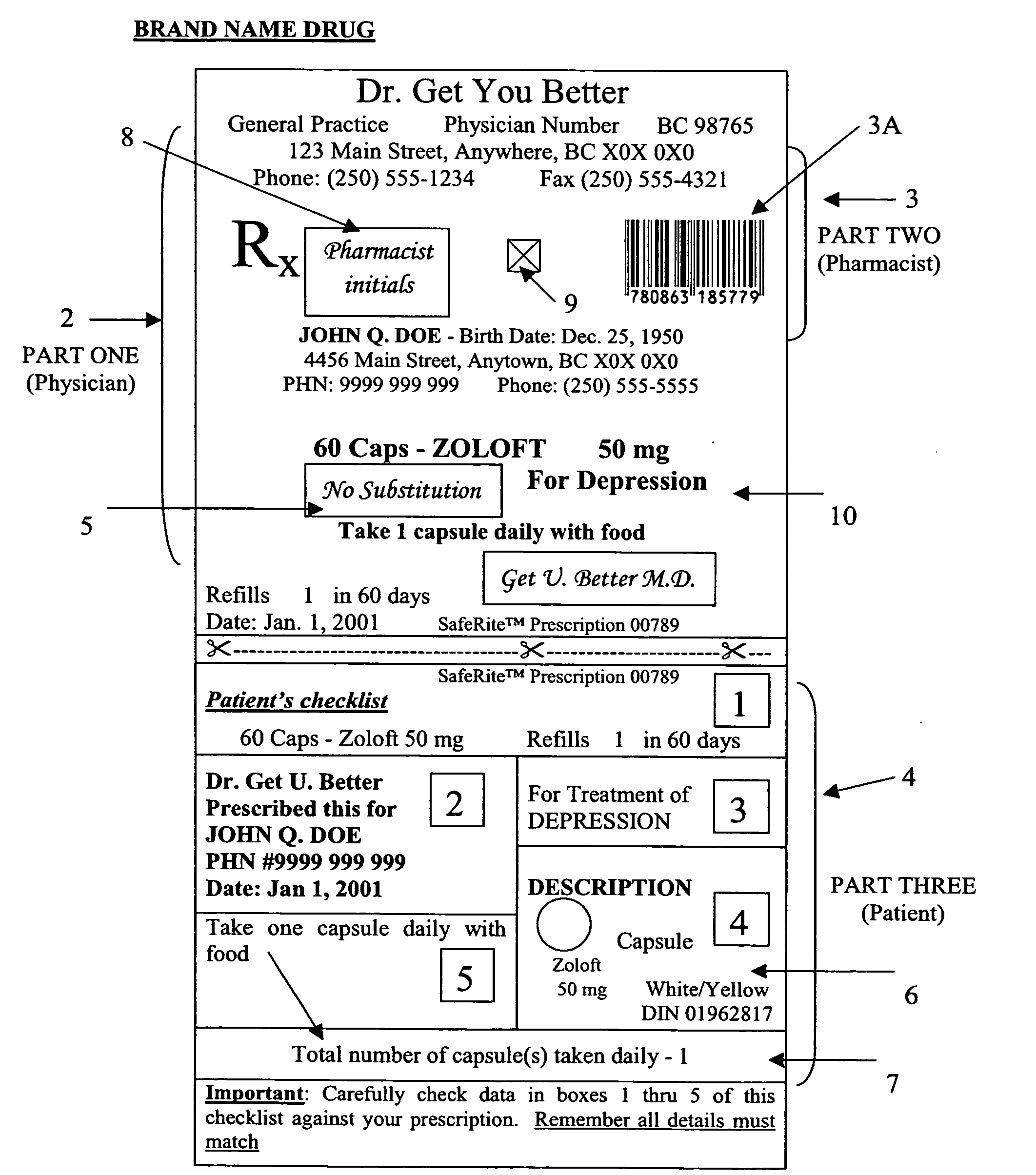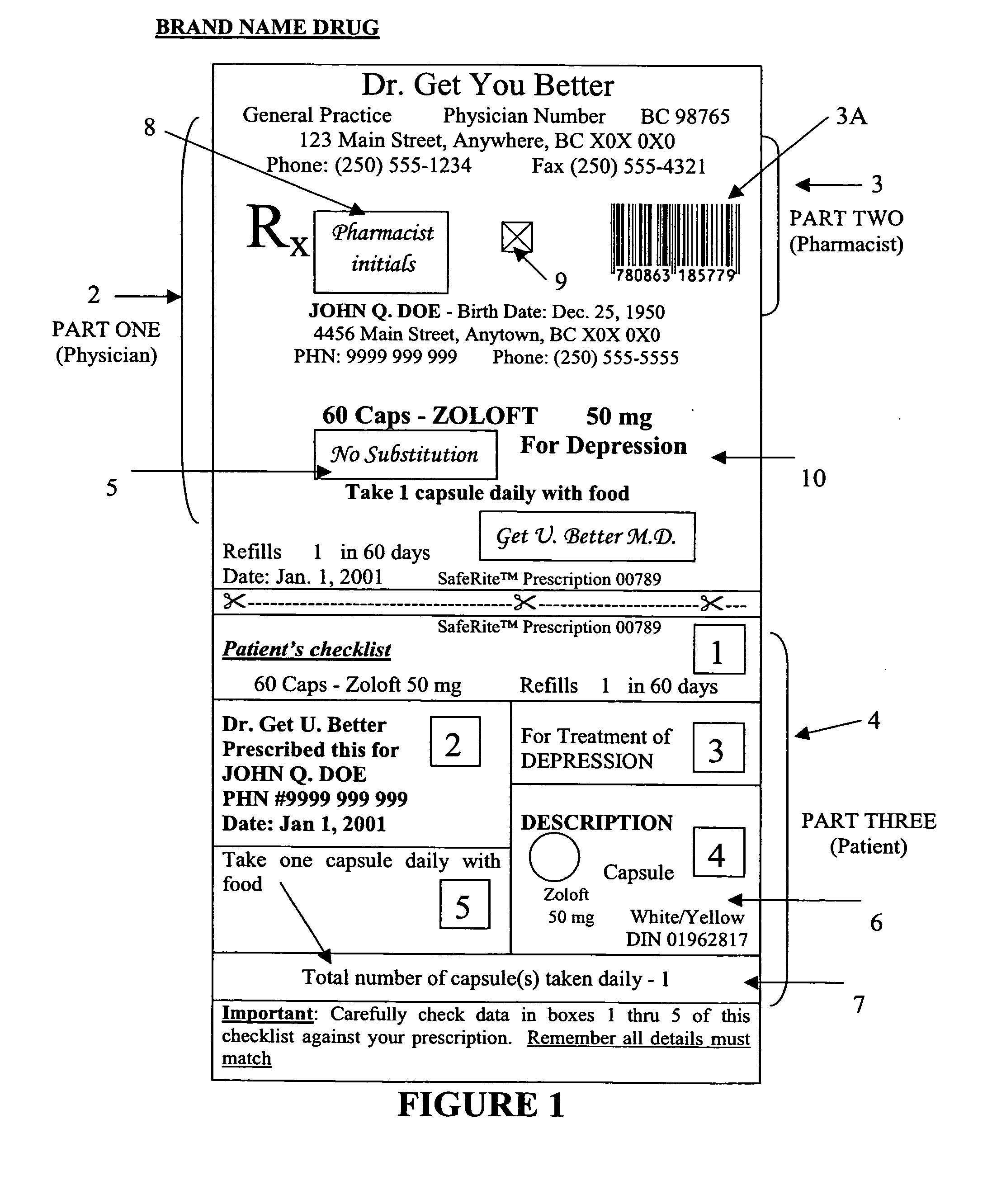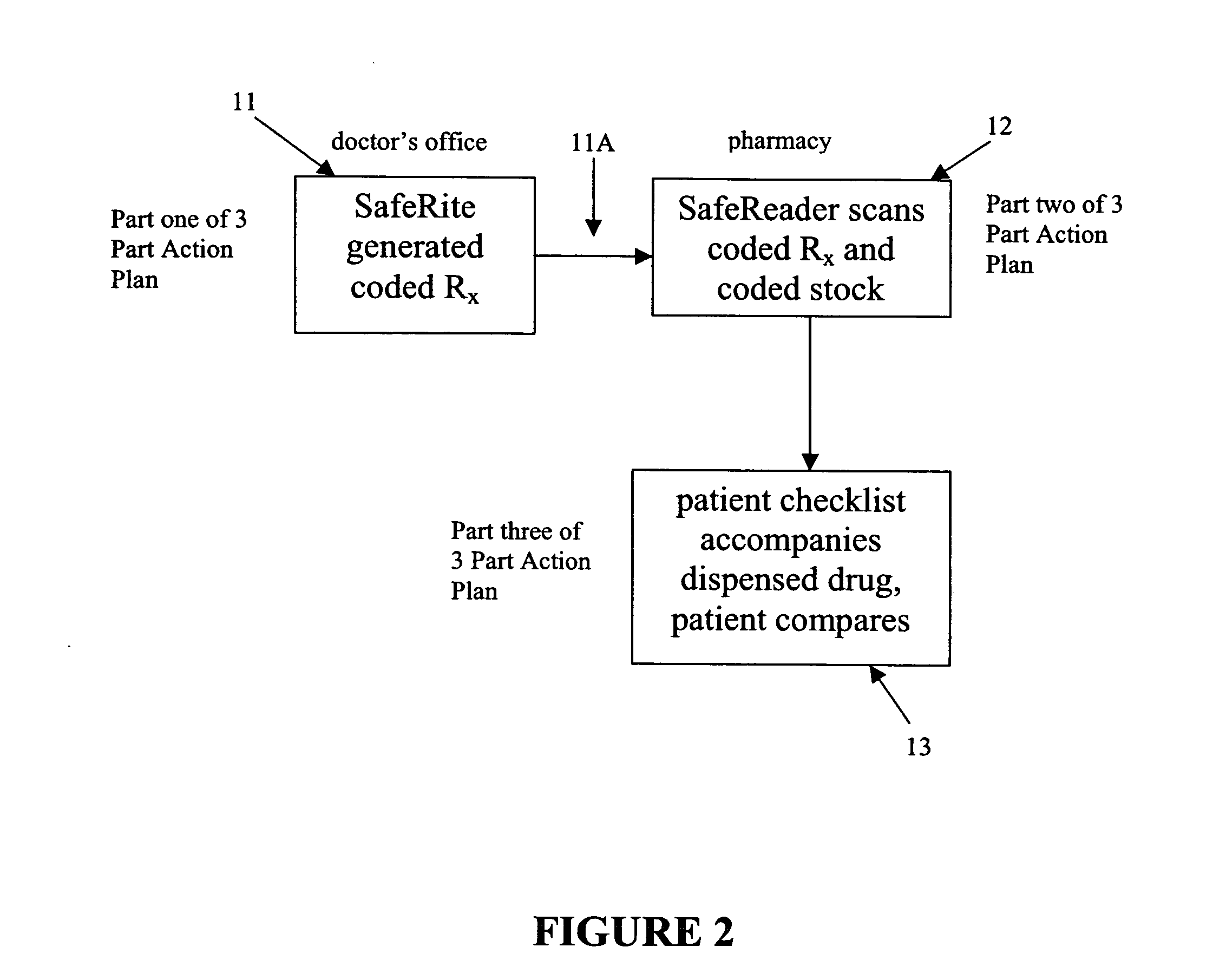Saferite system
a technology of saferite and saline, applied in the field of saferite system, to achieve the effect of reducing patient deaths and injuries and substantial financial savings
- Summary
- Abstract
- Description
- Claims
- Application Information
AI Technical Summary
Benefits of technology
Problems solved by technology
Method used
Image
Examples
Embodiment Construction
Prescription Design
[0046]A prescription generated by the printing system produces a computer generated (printed or electronically transmitted) prescription as shown in FIG. 1, includes built-in safety features and content, specifically the physician's part 2, the pharmacy's part 3 and the patient checklist 4, involves a patient in a final cross-check of the dispensed medication through the use of the patient checklist 4, and provides a user-friendly design requiring minimum prescription input.
[0047]One skilled in the art will appreciate that the prescription prepared by the printing system will adhere to characteristics of good design and optimal functionality and, as such, may include features such as clear, large, easy to read printed prescription, a flexible format such as allowing print and / or electronic transmission, and conformance with the 3 Part Action Plan.
[0048]To prevent generic substitution, a physician may write the appropriate “No Substitution” or “Dispense as Written”...
PUM
 Login to View More
Login to View More Abstract
Description
Claims
Application Information
 Login to View More
Login to View More - R&D
- Intellectual Property
- Life Sciences
- Materials
- Tech Scout
- Unparalleled Data Quality
- Higher Quality Content
- 60% Fewer Hallucinations
Browse by: Latest US Patents, China's latest patents, Technical Efficacy Thesaurus, Application Domain, Technology Topic, Popular Technical Reports.
© 2025 PatSnap. All rights reserved.Legal|Privacy policy|Modern Slavery Act Transparency Statement|Sitemap|About US| Contact US: help@patsnap.com



